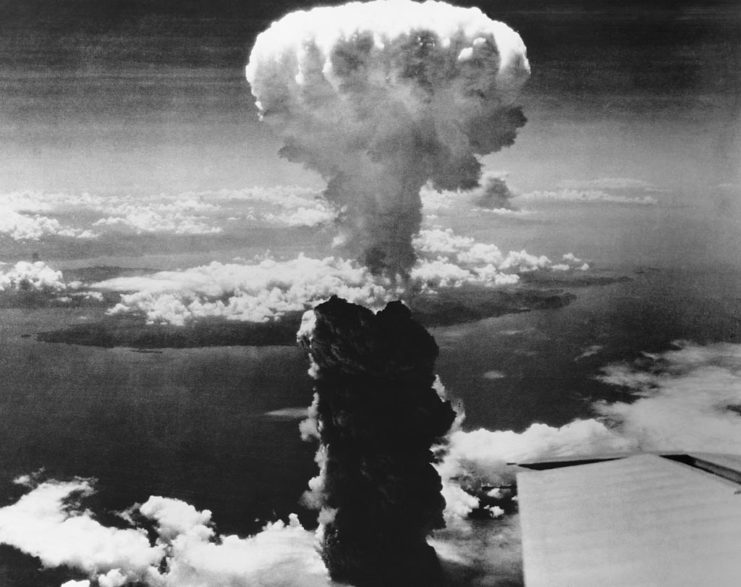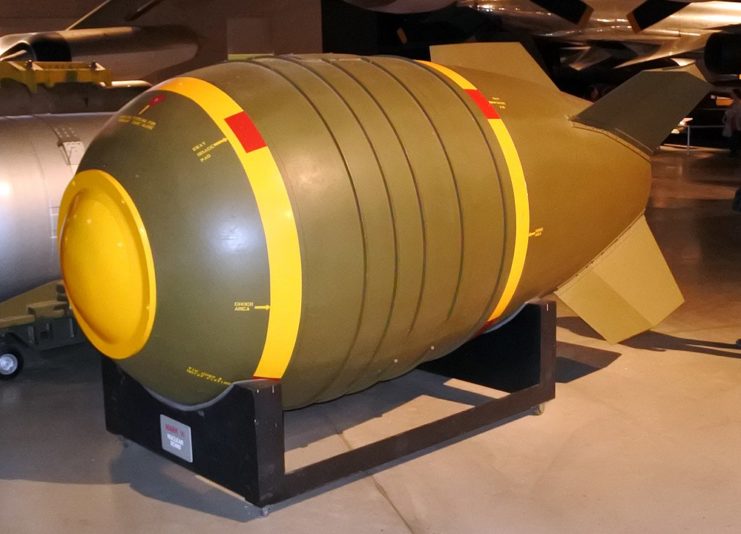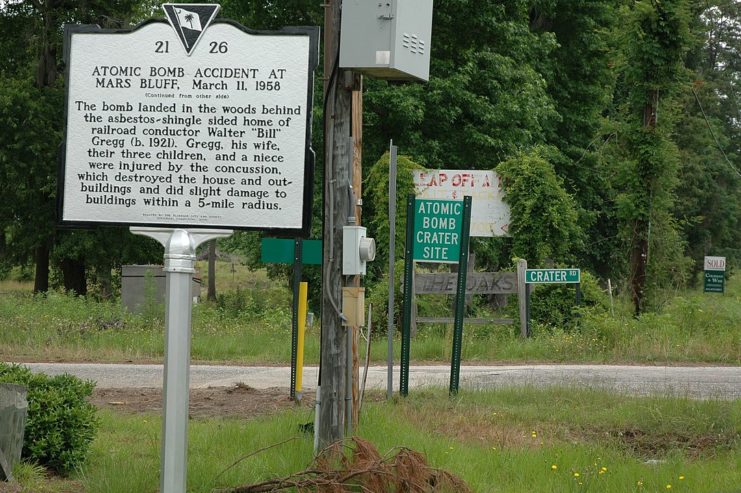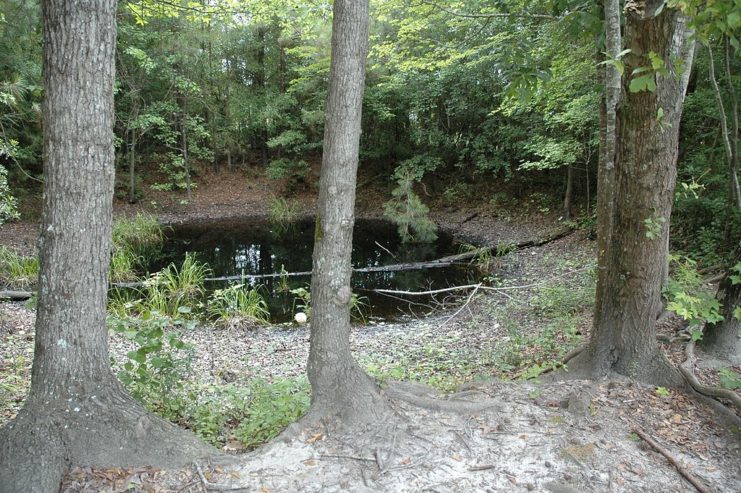The United States continued developing bombs after World War II

The Second World War was a harrowing conflict. The US brought it to a close in the summer of 1945 by dropping the atomic bombs Little Boy and Fat Man on Hiroshima and Nagasaki. Nonetheless, the nation continued to advance its development of newer and more powerful nuclear weapons.
Development of the Mk 6 nuclear bomb

The Mk 6 nuclear bomb was a more advanced version of the bomb dropped on Nagasaki during World War II. It was upgraded multiple times between 1951 and 1955 and stayed in service until 1962. Over that time, more than 1,000 of these bombs were built, each with the ability to create different sizes of nuclear explosions.
As tensions with the Soviet Union grew, the U.S. Air Force used the Mk 6 in training exercises. This resulted in several accidental bomb drops during the 1950s, which the military referred to as “broken arrows.”
A Mk 6 nuclear bomb is dropped on Mars Bluff, South Carolina

On March 11, 1958, a Boeing B-47 Stratojet took off from Hunter Army Airfield in Georgia, crewed by members of the 375th Bombardment Squadron of the 308th Bombardment Wing. The bomber was en route to the United Kingdom and then on to North Africa as part of Operation Snow Flurry, a training mission involving simulated bomb drops. Although the mission was only a drill, its strict timing put added pressure on the crew.
Before takeoff, the crew struggled to properly secure a Mk 6 nuclear bomb in the plane’s bomb bay. They had trouble getting it into the correct position and had to use a sling to force a steel locking pin into place. After takeoff, the locking mechanism disengaged as designed, but it failed to lock again once the aircraft was airborne.
Captain Bruce Kulka, the navigator and bombardier, was sent to inspect the issue. While checking the bomb bay, he accidentally triggered the emergency release pin. The bomb dropped from an altitude of 15,000 to 20,000 feet. Kulka narrowly avoided falling out of the aircraft himself by grabbing onto something and pulling himself back to safety.
The Mk 6 bomb—though lacking its nuclear core—landed on a backyard playhouse built by Bill Gregg for his children in Mars Bluff, South Carolina. The Gregg children were playing about 200 feet away when it hit. The explosion, caused by the bomb’s high-explosive components, destroyed the playhouse and left a 70-foot-wide crater. Bill Gregg, his wife, and their children were injured, and seven nearby buildings suffered damage in the blast.
Reaction to the Mars Bluff Incident

Surprisingly, no one suffered serious injuries from the blast because the Mk 6 bomb’s nuclear core was stored separately in the B-47 aircraft. The explosion was caused only by the TNT inside the bomb. If a full-scale nuclear detonation had occurred, the destruction would have been devastating.
Military authorities arrived at the scene shortly after the incident. The Gregg family, who lost everything in the explosion, sued the Air Force and granted $54,000 in compensation. Despite their hardship, Bill Gregg remained optimistic, later telling a local newspaper, “I’ve always wanted a swimming pool, and now I’ve got a hole for one at no cost.”
Legacy of the Mars Bluff Incident

More from us: The US Army Air Corps Once Dropped Bombs on Boise City, Oklahoma
The near-disaster became known as the “Mars Buff Incident,” and received local and international coverage. It also contributed to a change in the way the Air Force ran its training exercises going forward, especially since accidents like it were more common than the military would have liked to admit. Shortly after, the branch stopped carrying nuclear bombs during training missions.
